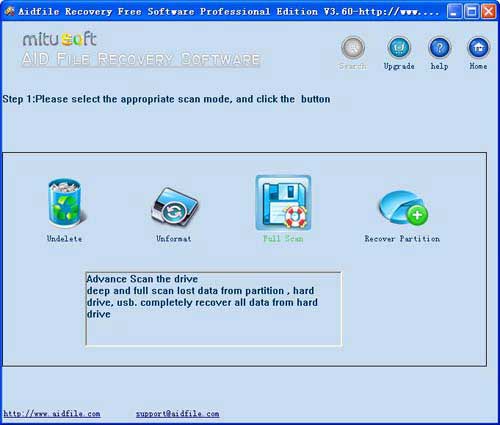No bootable device in UEFI, but Windows 10 boots perfectly fine using legacy BIOS repair tool fix to do data recovery, best file Recovery software help you recover MS word,excel, pictures, music, video files from No bootable device in UEFI, but Windows 10 boots perfectly fine using legacy BIOS
Use "unformat" to recover formatted drive for " No bootable device in UEFI, but Windows 10 boots perfectly fine using legacy BIOS" after quick format,full format,accidentally formatted,reformatting,High-level formatting,Low-level formatting.
Use "recover partition" to recover files - No bootable device in UEFI, but Windows 10 boots perfectly fine using legacy BIOS partition,lost partition,changed ,damaged partition.And if the size or position of partition is changed by format,It can not recover with "unformat"so you can use "recover partition"mode.
Use "undelete" to recover deleted files - No bootable device in UEFI, but Windows 10 boots perfectly fine using legacy BIOS after Virus attack,Recycle bin clear,disk cleanup,Press shift del by mistake,permanently empty recycle bin,shift delete ,accidentally deleted by a mistake.
Use "Full Scan" to recover data - No bootable device in UEFI, but Windows 10 boots perfectly fine using legacy BIOS which can not be found with "undelete" and "unformat" and "recover partition",after showing an error,display as raw file system,unformatted,unknown partition,unpartitioned,needs to be formatted,or the file system is not exfat,not fat32,not ntfs.
"No bootable device in UEFI, but Windows 10 boots perfectly fine using legacy BIOS ", I cleaned my drive 0 to do a clean install of Windows 10 using a USB drive; however, in order to do so I needed to change UEFI to Legacy in the boot menu and put USB HDD(?) at the top of the boot priority list. After installation, it worked. The problem is, after a few restarts, I tried to change back to using UEFI for faster start-ups, but everytime I change back, it says "No bootable device" with the hard drive image above it. Everything works on legacy BIOS, though. Any help is appreciated, but I would prefer if the explanations could be simplified as much as possible since I'm no tech savvy haha. Some info: OS: Windows 10 Home Single Language System type: 64-bit OS, x64-based processor
Aidfile Recovery Software Keyfeature
support FAT32 EXFAT NTFS and RAW file system
support Win32 (32 bits) and Win64 (64 bits)
Support Windows XP, Windows 8, Windows 8.1,Windows Vista, Windows 2003, 2008, 2012,Windows 10,Windows 7 .
Desktop & laptops Ultrabook:HP Pavilion,HP Compa,Alienware Alpha,Lenovo ThinkCentre,Lenovo IdeaCentre,Dell Inspiron,Dell XPS,Sony VAIO,Acer Aspire,Asus Transformer,Dell Latitude,Samsung Ativ Book,Asus VivoBook,HP Envy,Lenovo IBM ThinkPad,Lenovo IdeaPad Yoga,Microsoft Surface,Toshiba Satellite
MS Office document (Word, Excel, PowerPoint, Outlook) types (doc, docx, ppt, pptx, xls, xlsx, pst, etc.),photos (JPG, PNG, ICON, TIF, BMP, RAF, CR2, etc.), videos and audios (MPG, MP4, MP3, MTS, M2TS, 3GP, AVI, MOV, RM, RMVB, etc.), compressed files (rar, zip, etc.), PE files (exe, dll, lib, etc.) and so on.

